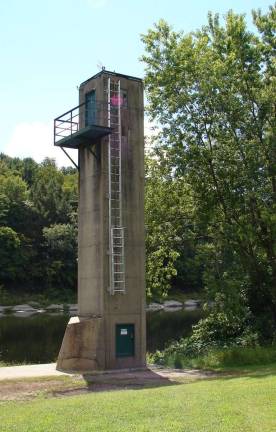Updated tool aids water predictions

DINGMAN — An updated modeling tool allows the public to test different water management scenarios in Delaware River Basin and compare the results.
The Delaware River Basin-Planning Support Tool (DRB-PST) allows flow management scenarios to be tested against targets, regulations, and laws that govern water use in the basin. It shows users how those scenarios would affect the supply of drinking, downstream water releases, fisheries, and floods, among other outcomes.
The tool supports "a more comprehensive understanding about how reservoir and flow management operating plans affect river flows and related aquatic habitats," said Steve Tambini, executive director of the Delaware River Basin Commission (DRBC) when announcing the tool last week. The science-based tool compares "what-if" scenarios related to multiple water resource goals, targets and objectives, he said.
An interdependent systemDelaware River flows, diversions of water out of the basin, and water uses within the basin are managed through complex and interdependent rules. The updated modeling tool uses hydrologic information about runoff and snowmelt, operating conditions, and management to evaluate how a reservoir's operating plan will affect the objectives identified in the Delaware River Basin Compact, which created the DRBC in 1961.
Three reservoirs in the Delaware's headwaters are owned and operated by New York City and provide about half of the city's water supply. Downstream releases from these reservoirs, and diversions out of the basin to supply New York City and New Jersey, were negotiated by Delaware, New Jersey, New York, Pennsylvania, and New York City — commonly known as "the Decree Parties" — under the terms of a 1954 U.S. Supreme Court Decree and the subsequent Good Faith Agreement Recommendations.
The DRBC includes the four basin states and the federal government. New York City is not a DRBC member.
"Scientists and engineers from DRBC and New York City collaborated to ensure this new public modeling tool produced accurate results that are comparable to those generated by the OST modeling tool that the city uses to make decisions about reservoir operations every day," said Tambini.
Those who did not previously use the DRB-OASIS model and who want to use the DRB-PST model for the first time will need to purchase required software.
The tool will be on the agenda of the Regulated Flow Advisory Committee meeting on April 17 at the commission's West Trenton, N.J., office. More information is available at the commission's web site at www.drbc.net.